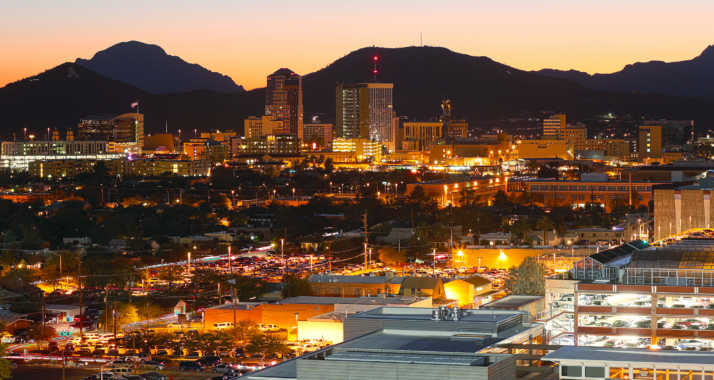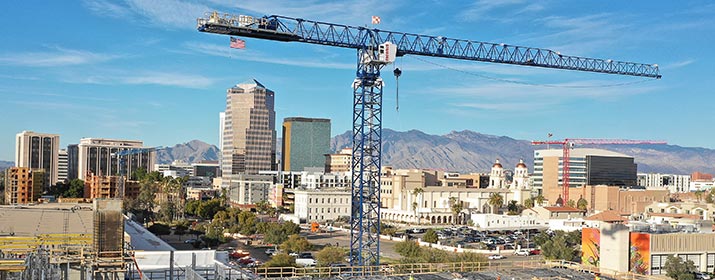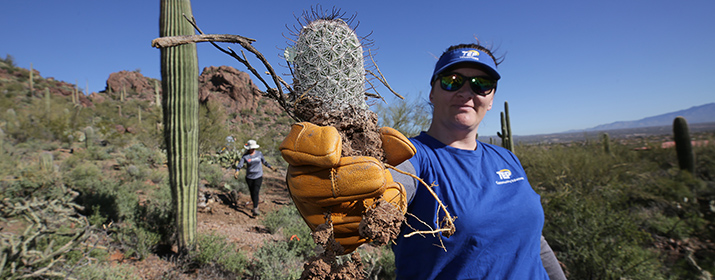
Powered by sunshine, a seed planted here 10 years ago continues to grow.
In February 2011, TEP dedicated its first local community-scale solar array – a 1.5 megawatt (MW) system large enough to power about 320 homes.
TEP has since developed a 185 MW portfolio of solar arrays in Southern Arizona that produce enough power to serve the annual electric needs of more than 52,000 Tucson homes.
“We’re honoring our commitment to build a cleaner, greener energy grid here in Southern Arizona for our customers. That first local array represented an important step toward reducing carbon emissions and building more efficient systems,” said Erik Bakken, Vice President of System Operations and Energy Resources. “Southern Arizona is obviously a great place to invest in solar and we’re proud of the renewable portfolio that we’ve built, but we’re not finished yet.”
TEP’s next local solar array, the 100 MW Wilmot Energy Center, will feature a 30 MW battery storage system and will produce enough energy to power more than 26,000 homes annually. Located southeast of the Tucson International Airport, it’s one of three large renewable systems on track to begin producing power for customers this year.
TEP will use Wilmot Energy Center to generate and store solar energy during peak production hours, then later use that power during high usage periods to meet customers’ energy needs. The company has plans to expand significantly its portfolio of energy storage resources from about 50 MW at the end of 2021 to more than 1,400 MW by 2035.
As TEP has expanded its solar resources, photovoltaic systems have become more reliable – and affordable. In 2011, when TEP built its first local system for about $7.5 million, power produced by a single-axis system cost about $166 per MW-hour (MWh). This year? About $35/MWh.
By the end of 2020, TEP had invested nearly $440 million to build solar energy systems and purchase solar power from systems owned by third parties. Add in TEP’s purchase of wind energy for customers and the total increases to about $560 million.
TEP recently announced plans to provide more than 70 percent of our power from wind and solar resources by 2035 while reducing carbon emissions 80 percent. These steps will avoid the production of more than 50 million tons of carbon dioxide over the next 15 years – equivalent to removing three-quarters of a million cars off the road. TEP’s increasingly sustainable resources will be supported by efficient natural gas fired generators and energy storage systems. TEP also plans to retire its remaining coal-fired power plants over the next 12 years.
Meanwhile, that first local solar system continues to produce power for customers. Located at the UA Tech Park in southeast Tucson, the single-axis array tracks the movement of the sun to maximize production.
It was the first system to provide power for TEP GoSolar Shares, then known as Bright Tucson Community Solar, which provides customers a convenient way to buy locally generated solar power for their homes or businesses. Customers can purchase some or all of their energy through the program, reducing or eliminating their use of conventional power for an affordable price.
It also was the first of several systems installed in the Tech Park’s ‘Solar Zone,’ a 200-acre site featuring solar research and demonstration projects. The Solar Zone is one of several successful sustainability collaborations with UArizona.
TEP’s very first large solar array, a 3.7 MW system located near TEP’s Springerville Generating Station in the White Mountains area, was completed in 2004.






